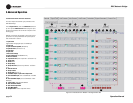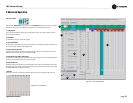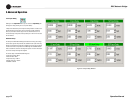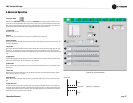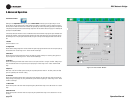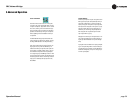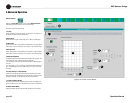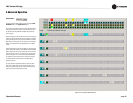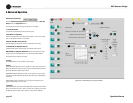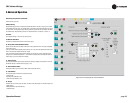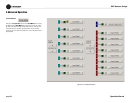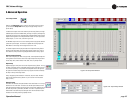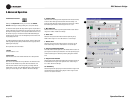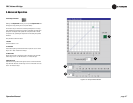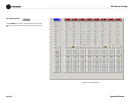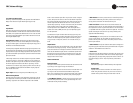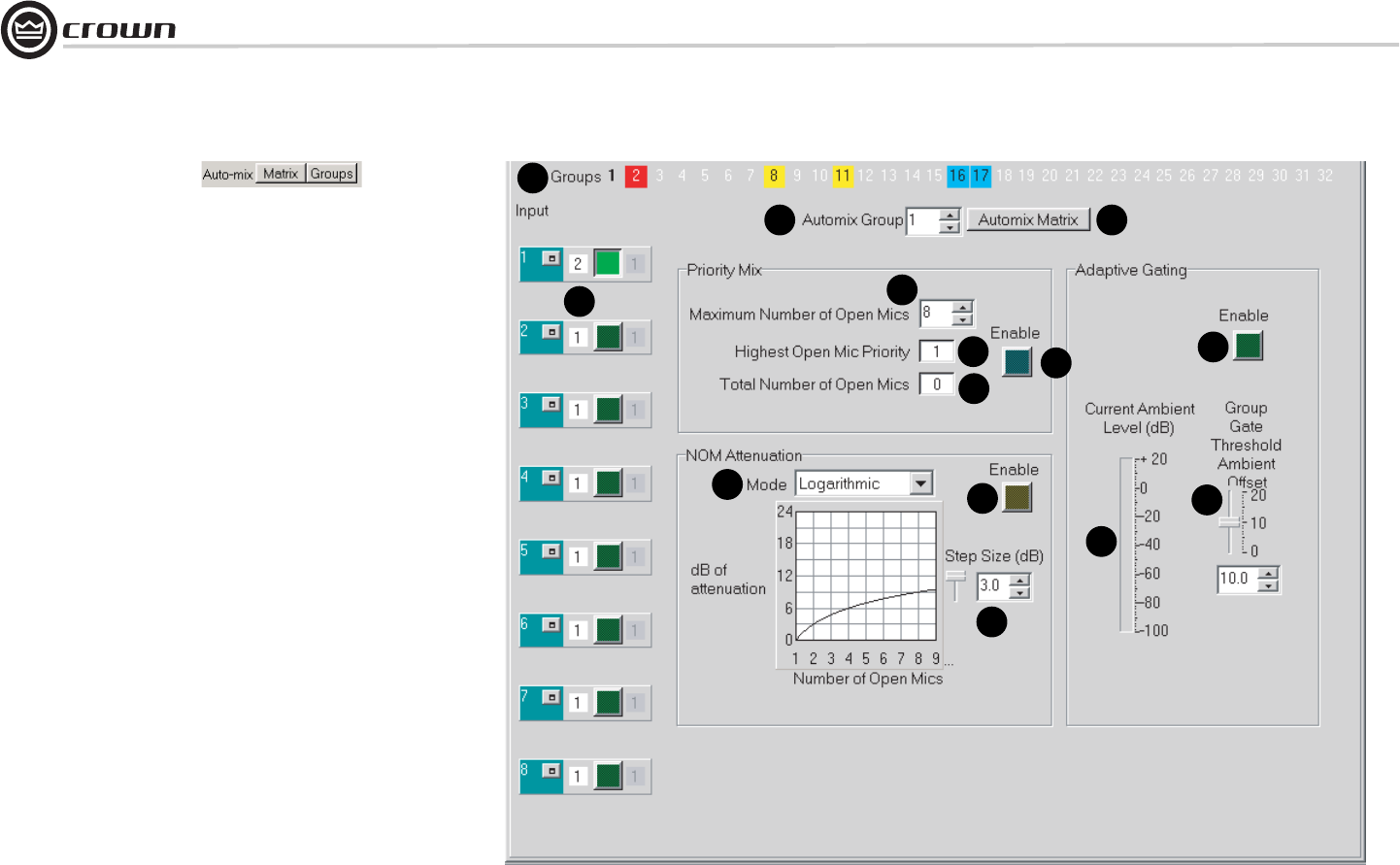
Operation Manual
DBC Network Bridge
page 62
Automixing Group Controls
Access the Automixing Group Controls (Figure 5.25) by pressing the Auto-mix
Groups button in the Signal Path window.
There are two group controls and two group indicators for this feature:
1. Priority Mix Enable
Turns Ducking Priority Mix on and off for the automix group.
2. Max Number of Open Mics
Sets the max number of open mics within the automix group. A last-in, first-out algo-
rithm is used to determine which mics are ducked.
3. Highest Open Mic Priority Indicator
Shows the highest priority level for all open mics within the automix group.
4. Total Number of Open Mics Indicator
Indicates the total number of presently open mics within the automix group.
NOM (Number of Open Mics) Attenuation reduces overall system gain as the
number of open mics increases beyond one for improved gain before feedback.
There are three group controls for this feature:
5. Enable
Turns NOM Attenuation on and off within an automix group.
6. Mode
Sets the attenuation algorithm to linear or logarithmic. In linear mode, each open mic
beyond one will cause all inputs in the auto-mix group to be attenuated by an amount
equal to the Attenuation Step Size, defined below.
Logarithmic mode: the attenuation per open mic will decrease as more mics open.
Logarithmic mode with Attenuation Step Size of 3dB emulates 'classic' NOM attenua-
tion schemes.
Linear mode: allows each individual mic to use a higher nominal gain by more
aggressively attenuating as more mics open.
7. Step Size
With NOM Attenuation mode, determines the attenuation as a function of the number of
open mics in the auto-mix group. In linear mode, each open mic beyond one increases
the attenuation by this amount. Control range is from 0.5 to 3dB in 0.5dB steps.
5 Advanced Operation
1
2
3
4
5
6
7
8
9
10
11 12
13
14
Figure 5.25 Automixing Group Controls Window



